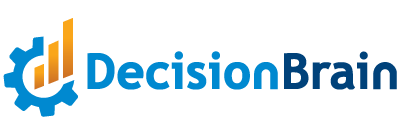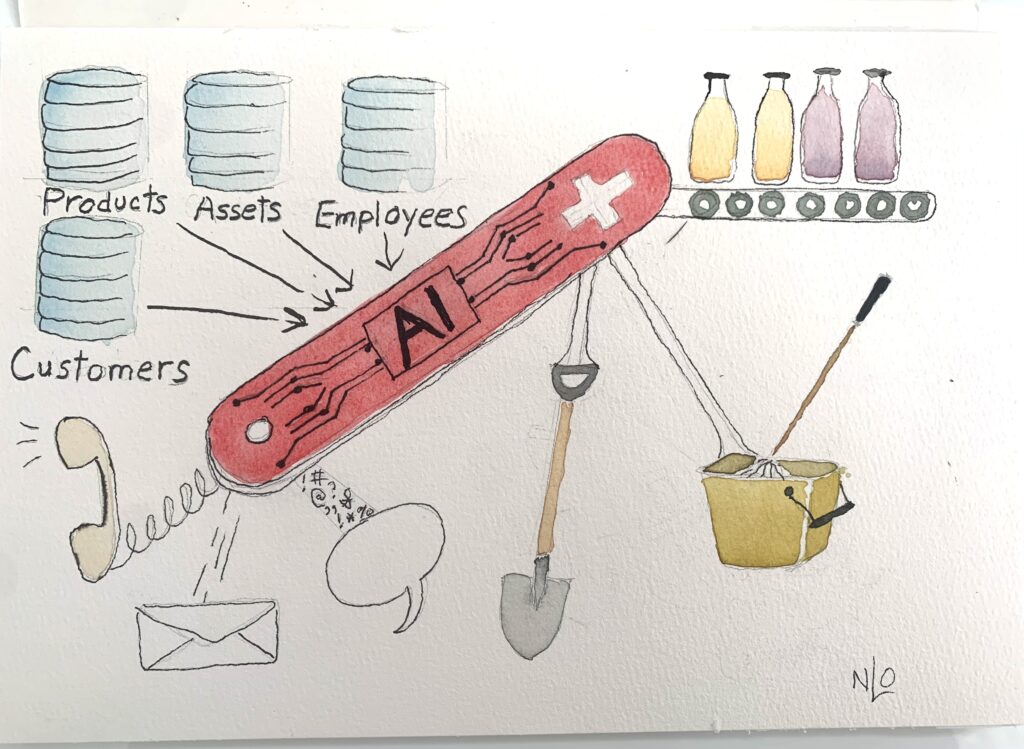Blog
Will AI Replace CRM, HR and ERP SaaS Giants?
In the last two episodes of the popular All-In Podcast, hosts and Silicon Valley entrepreneurs—most notably recent Joe Rogan guest Chamath Palihapitiya, along with co-hosts David Sacks, David Friedberg, and Jason Calacanis—made some waves. They suggested that AI will not only disrupt the SaaS industry but specifically the « untouchable » systems of record like Salesforce, Workday, and presumably even ERP systems like SAP.
AI vs. SaaS: Klarna’s Bold Move
This conversation was triggered by a statement from Klarna CEO Sebastian Siemiatkowski during a public earnings call. While discussing cost-cutting measures and layoffs, he revealed that Klarna is also ending its relationships with Salesforce and Workday, driven by an internal AI initiative. Unfortunately, Siemiatkowski didn’t provide details on how they plan to replace these systems, leaving the industry rife with speculation.
I’ve been following this debate closely, not just because of my work with the American Society for AI (ASFAI), but also because it directly impacts the companies I’ve worked for, including my current role at DecisionBrain. At DecisionBrain, we rely heavily on these systems of record at client sites to pull the data our optimization systems use to produce feasible, efficient plans and schedules. So, if AI replaces the systems we connect to—or the ones we help implement for our clients—it could affect us in a big way.
The Case Against AI Disruption
Most of the public reaction has been skeptical, based on two common views. First, there are the disbelievers who argue that Klarna likely wasn’t making extensive use of these systems to begin with, making it easier for them to go without Salesforce or Workday—regardless of whether AI replaces them. Second, there’s speculation that Siemiatkowski’s comment was more of a strategic negotiating tactic aimed at forcing these vendors to lower their renewal pricing. Some think Klarna will either regret their decision or, given the economic pressures on buy-now-pay-later firms, won’t need these systems for much longer anyway.
Marc Benioff, CEO of Salesforce, addressed these concerns at his annual DreamForce user conference last month. He reminded us that all companies need secure, reliable, and compliant systems to manage core information—whether it’s employee, customer, or supplier data—and AI isn’t built for that.
In the All-in-Podcast debate, David Sacks also emphasized that companies don’t want to “DIY” these core systems. While I can appreciate that perspective, I’ve also seen some companies build quite impressive data management, data science and application development teams who are quite interested in building their own systems, however, they often struggle with creating robust architectures that meet process and compliance requirements. Most companies simply aren’t built to do this well.
The Case For AI Disruption
On the other side of the debate, co-host Chamath Palihapitiya was the strongest proponent of AI’s potential to disrupt SaaS. He argued that many companies are stuck with « bad software » that was built by consultants and operates in a « clunky and deterministic » way on top of legacy systems of record. This software is expensive to maintain, inflexible, and limits what businesses can do.
Chamath believes these legacy systems no longer need to exist in their current form and could eventually be replaced by two types of systems:
- Replacement for systems of record: A simple file, database, or data lake that stores essential data like general ledgers, customer information, and employee records.
- AI-Driven Systems: AI agents that work like a Swiss Army knife—adaptable to whatever task the business requires. Instead of rigid systems, companies would direct AI agents toward specific outcomes.
He predicts two big disruptions, both of which he describes as deflationary: 1) system-of-record companies will lose their hold as the « vault » of client data, and 2) companies will become far more efficient, thereby maintaining rather than growing headcount as their companies grow. This also suggests that the seat-based licensing models for SaaS will disappear, with systems being priced based on consumption since AI agents will be doing an increasing proportion of the work. Chamath gives this a 5-10 year timeline.
David Friedberg added that while AI’s impact has so far been mostly on the frontend, the backend is next. Soon, AI will figure out its own data structure and architecture. While Friedberg didn’t explicitly mention it, this could mean that much of the data management process will become a « black box » like we’ve seen with large language models—leaving us to question how comfortable companies will be with that.
Chamath also mentioned companies like Mechanical Orchard, which are developing agentic frameworks capable of observing the I/O streams of these apps and constructing the middle logic automatically. (As a side note, whenever these podcast hosts name-drop companies, there’s often some affiliation behind the scenes, though I’m not sure if that’s the case here.)
Despite some initial resistance, David Sacks—who has ties to Salesforce and Marc Benioff—acknowledged that companies like Palantir are already moving in this direction. Palantir typically connects to existing systems of record and empowers analysts to build workflows around them. However, in the near future, these workflows could be controlled by AI agents instead. While Sacks doubts that companies will be eager to rip out their SaaS systems entirely, Chamath countered that they might, especially when renewal bills come due. At the very least, price disruption seems inevitable.
Implications for Optimization-Powered Systems
What does all of this mean for optimization-powered decision support systems like those we provide at DecisionBrain? While I can’t predict the future, here are two thoughts:
Data Connectivity
Advanced planning and scheduling (APS) systems will always need a reliable connection to a continuously refreshed data pipeline, whether it’s from traditional systems of record, databases, or AI-managed data lakes. Having a dependable source of truth is necessary for generating accurate and feasible plans and schedules.
AI’s Limitations in Optimization
While AI shows promise in many areas, replicating the functionality within advanced planning and scheduling systems that are built on mathematical optimization solvers is another story. This is because optimization requires not only balancing competing objectives while staying within constraints but also because the solution space is very difficult to traverse in order to arrive at a good or optimal solution out of billions or more possibilities. Imagine an n-dimensional solution space with lots of peaks and valleys across the different dimensions, which makes it very difficult for a machine learning model to explore and learn.
For example, in a production scheduling problem for a factory, the objective might be to maximize demand satisfaction while reducing changeover time, WIP and material waste. But there could be hundreds of constraints to work around: specific machine availability, precedence constraints, material supply, workforce shifts, maintenance windows, etc. A change in any of these could have a very hard-to-predict ripple effect on the entire production plan. This could cause the runtime of the system to be orders of magnitude greater if the right algorithms aren’t used. This is in contrast to the way machine learning models learn, which tends to work better in continuous spaces.
In other words this process is not something that AI as we know it today can easily « learn » just by observing, say, a year’s worth of inputs and outputs across each factory.
That said, there are certain areas where AI might be able to achieve a good approximation. A trained AI model could likely observe enough examples of truck routes in a dispatch system to generate reasonably efficient routes in most situations. However, when faced with black swan-type disruptions, such as was experienced during the COVID-19 crisis – e.g. what if the number of available drivers is cut in half – AI may struggle to generate the flexibility and precision that a well-designed optimization system can provide. There is also a lot of investigation into how AI can be used to generate optimization applications. [Interesting related article here that explores how large language models (LLMs) are being tested as optimizers for some use cases, including the traveling salesman problem, but also shows that they face challenges with complex, large-scale optimization tasks.]
What We’re Doing at DecisionBrain
At DecisionBrain, we’ve been exploring the intersection of AI, LLMs, and mathematical optimization through both internal research and collaborations with our academic network. Although many of us have been working in optimization for decades, we recognize that there’s still a high barrier to adoption. Many companies that could benefit from optimization still aren’t using it. We believe AI could help break down these barriers and make optimization more accessible.
If you’re interested in discussing how AI and optimization intersect, or want to explore how this shift might affect your business, feel free to reach out!
Ready to transform your operations?
Contact DecisionBrain today to discover how our solutions can help your business thrive.
DecisionBrain is a leading provider of advanced decision support software that is used to solve the world’s hardest supply chain, workforce and maintenance planning, scheduling & logistics optimization problems. With over 400 person-years of experience in machine learning, operations research and mathematical optimization, DecisionBrain delivers custom-fit decision support systems where packaged applications fall short. Read more about us or contact us to talk about our solutions!
About the Author
Nevra brings over 20 years of enterprise software sales, marketing and leadership experience to DecisionBrain. Nevra has devoted her career to helping organizations apply big data, analytics, optimization and other artificial intelligence technologies to make better decisions. Before DecisionBrain, Nevra helped grow sales at several early-stage companies such as Databricks, Syncsort (now Precisely), RedPrairie (now BlueYonder), KXEN (now SAP), and ILOG (now IBM). Nevra holds a B.S. in Physics from the University of California, Santa Cruz.











